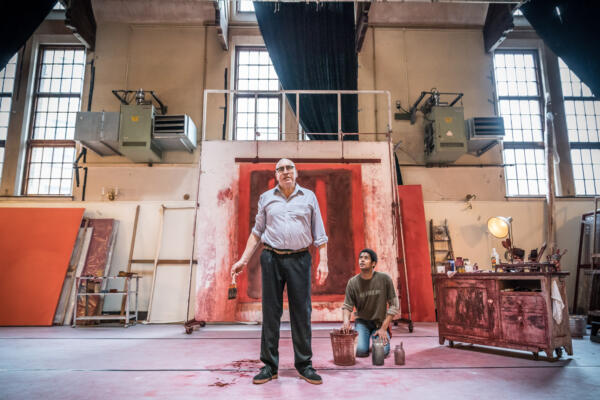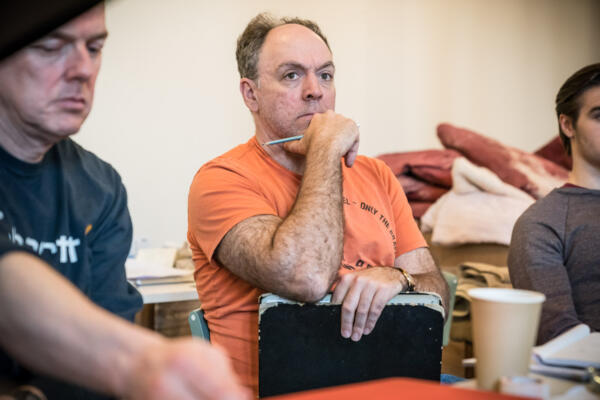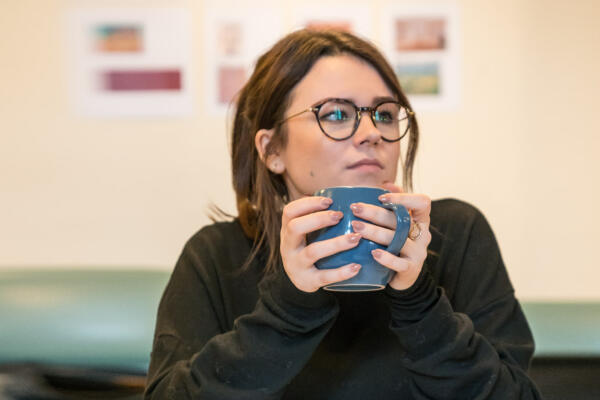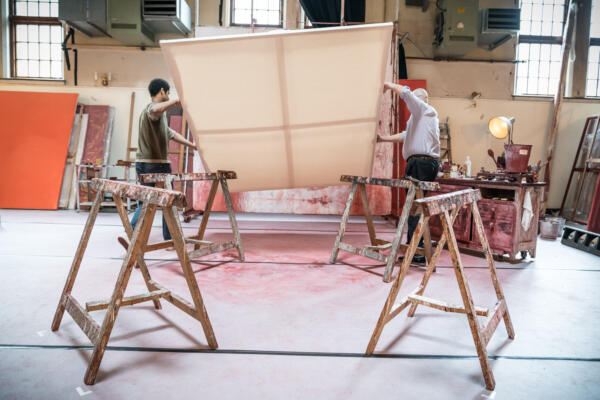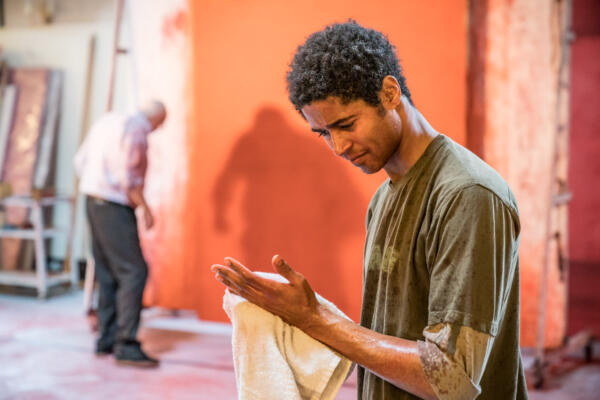Red | Inside the Rehearsal Room
Red– Week One, Day One
Education Associate Dominic Francis provides an insight into the cast and Creative Team’s rehearsal process for Red
It’s the first day of rehearsals for MGC’s new production of Red by John Logan and the cast and Creative Team gather in the high-ceilinged Sunday school at Union Chapel in Islington. There are many familiar faces. Alongside director Michael Grandage is Alfred Molina, who played artist Mark Rothko in the original production at the Donmar Warehouse in 2009, plus the same Creative Team and members of Stage Management – the latter hugely experienced in creating the on-stage environment of Rothko’s studio, with its large canvas frames and working gas stove complete with bubbling pots of primer.
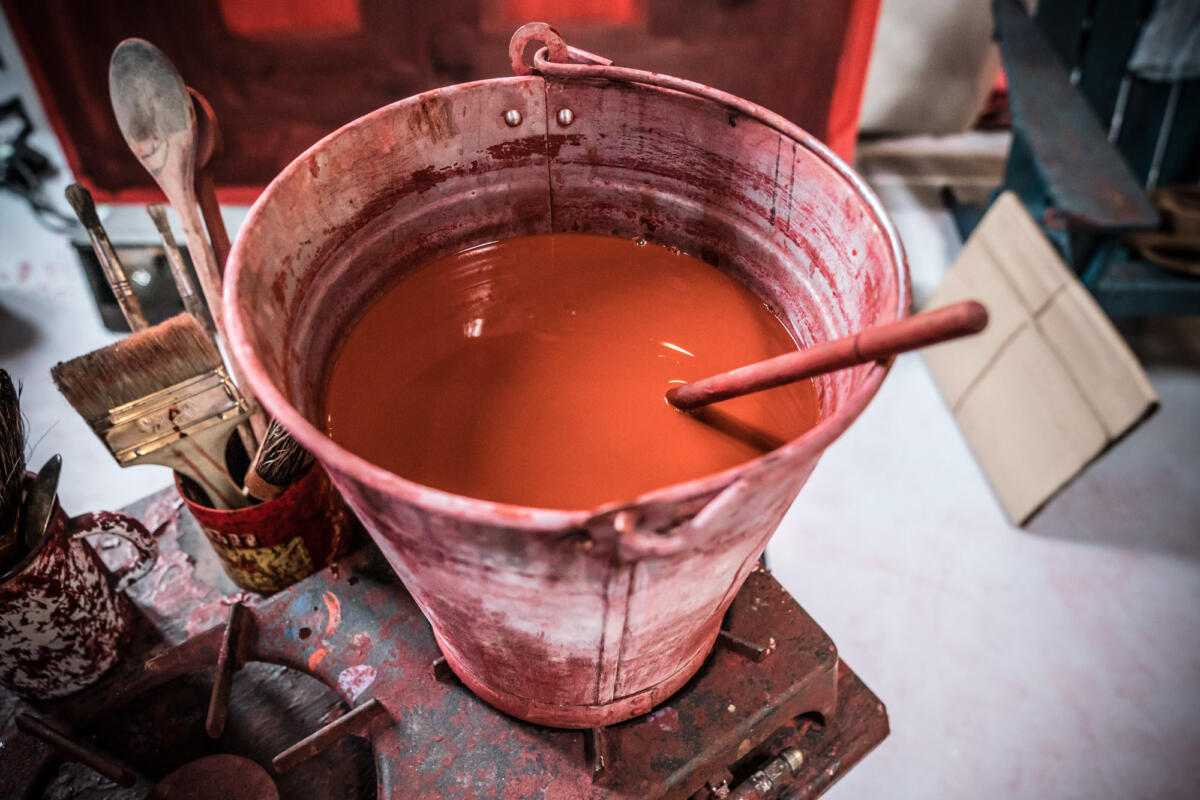
The old team members are joined by new ones, not least Alfred Enoch who plays Ken, Rothko’s assistant, and Michael welcomes everyone to the start of four weeks’ rehearsals, followed by the move to Wyndham’s Theatre for a three-month run. John Logan’s play, he suggests, is even more important today than nine years ago, in terms of what it has to say about the value of art to society – ‘We always have to make a case for the arts.’
The welcome and introductions over, those members of the wider team not immediately involved in rehearsals leave and Michael, the cast and Stage Management settle down to work. Michael proposes they start with a readthrough, which he comments he doesn’t normally do as ‘they’re not a level playing field’ but he knows both actors have done sufficient preparation and are ready. He asks Company Stage Manager, Greg Shimmin, to help him show Fred and Alfie around the stage, which is marked-up on the rehearsal room floor, indicating where the walls and doorways are. This will be useful, he says, in terms of orientating themselves during the readthrough. It’s noted that there’s no model-box of the set as so many of its actual elements still exist and are already in the room.
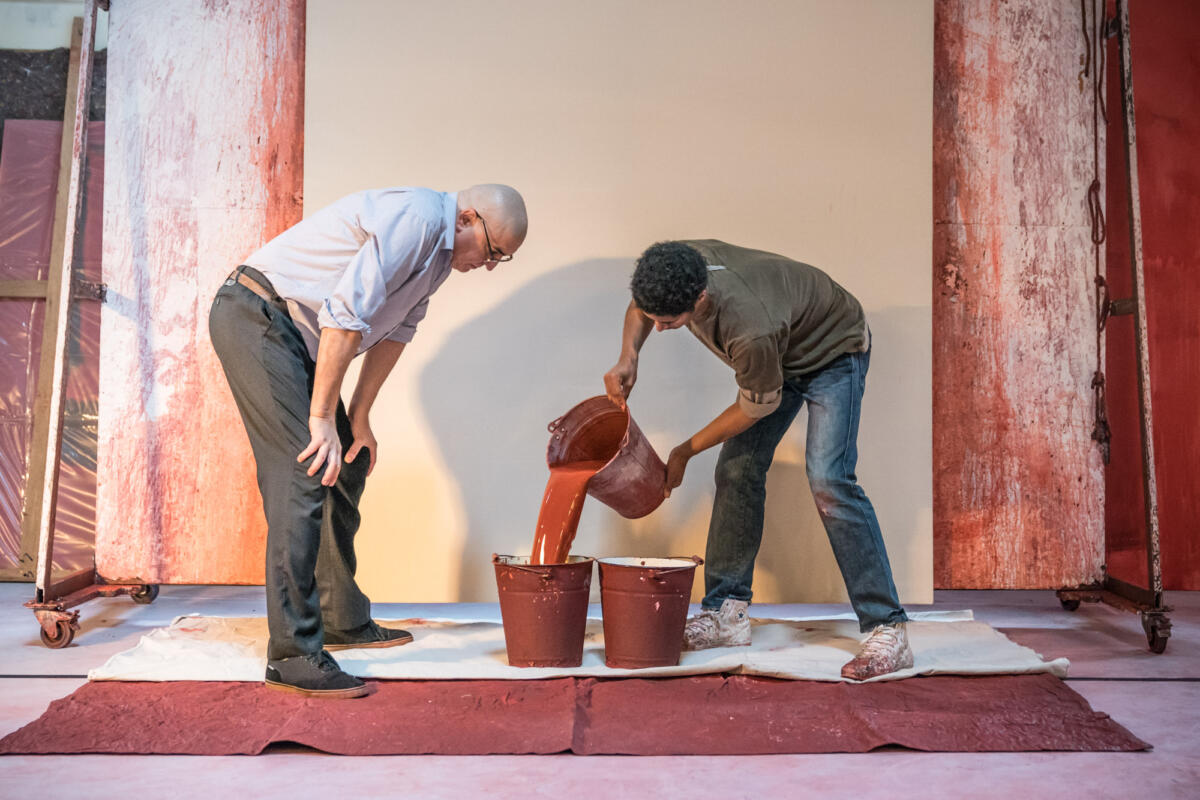
Rothko set up studios in a variety of venues throughout his career, explains Michael. For the Seagram Murals, the paintings at the centre of the play, the artist converted a basketball court for this purpose. Standing in this imagined environment, Michael says to the two actors, ‘Crucially, I want to invite both of you to create a space in which you can look at any picture’. He indicates the ‘walls’ on which the paintings-in-progress hang, eventually pointing downstage towards the auditorium. ‘We never break the fourth wall,’ he states. ‘We need to establish this language now.’
Michael turns his attention to a large metal scaffold upstage. ‘This is the key prop that will dominate most of our show. It’s the frame that Rothko hangs his canvases on to work.’ He acknowledges the fourth wall again: ‘We must believe there’s an identical one there.’ He highlights the importance of the scene changes, an integral part of which is composer Adam Cork’s music. ‘We need to keep setting up a new scene, to tell the story that time has moved on, by hanging a new canvas on the frame’. This is the only blocking that Michael specifically wants to set. He and Fred refer to the ‘choreography’ of moving the frame – ‘We treated it as a dance,’ says Michael. The music is key to this, he observes, commenting to Alfie, ‘It’s a great road map for Ken’.
Having consulted the cast and agreed that he will read only the essential stage-directions, to set the scenes and provide context, Michael begins the readthrough. Without any music or movement it takes just over an hour and afterwards, having congratulated both actors, Michael says he has lots of questions and suggests they take a short break before coming back to discuss them.
Revisiting Red nearly a decade on Michael notes new resonances for him personally: ‘It’s a play about something I’m very passionate about, this idea of mentorship – an older person with a certain amount of knowledge, which a younger person wants to learn as soon as possible. I used to think it was a simple, one-way process: teacher and student, father and son. This play really nails it. In a true mentor-mentee relationship it should be a two-way process.’ And it’s a process that can be unnerving for the teacher-father. ‘You have to embrace the idea that someone will eventually destroy your work and make something new. What’s dead is when the assistant just wants to be like their mentor.’
Michael reflects on what Rothko and Ken learn from one another through the course of the play. At first, he suggests, the artist appears to take very little from his assistant, but by the end of their time together he clearly has. What does Ken learn in return? Fred thinks Rothko passes on a methodology, observing that the young man is preoccupied by two things: the death of his parents and the mentoring relationship with Rothko.
‘For us, as an audience, we need to believe that Ken could become another Andy Warhol,’ says Michael. He also thinks the opposite is equally valid. ‘Wouldn’t it be just as good if Ken went on to live a meaningful life as a result of his relationship with Rothko? He doesn’t have to be famous. That’s a central message of the play.’ Michael acknowledges that unlike the character of Rothko, who’s based upon a real person, Ken is more of a fictional character. ‘There’s a lot of unknowns to this play, which you have to make up,’ he suggests to Alfie. For example, who is Ken talking to on the telephone at the start of Scene Three? ‘You can invent that.’
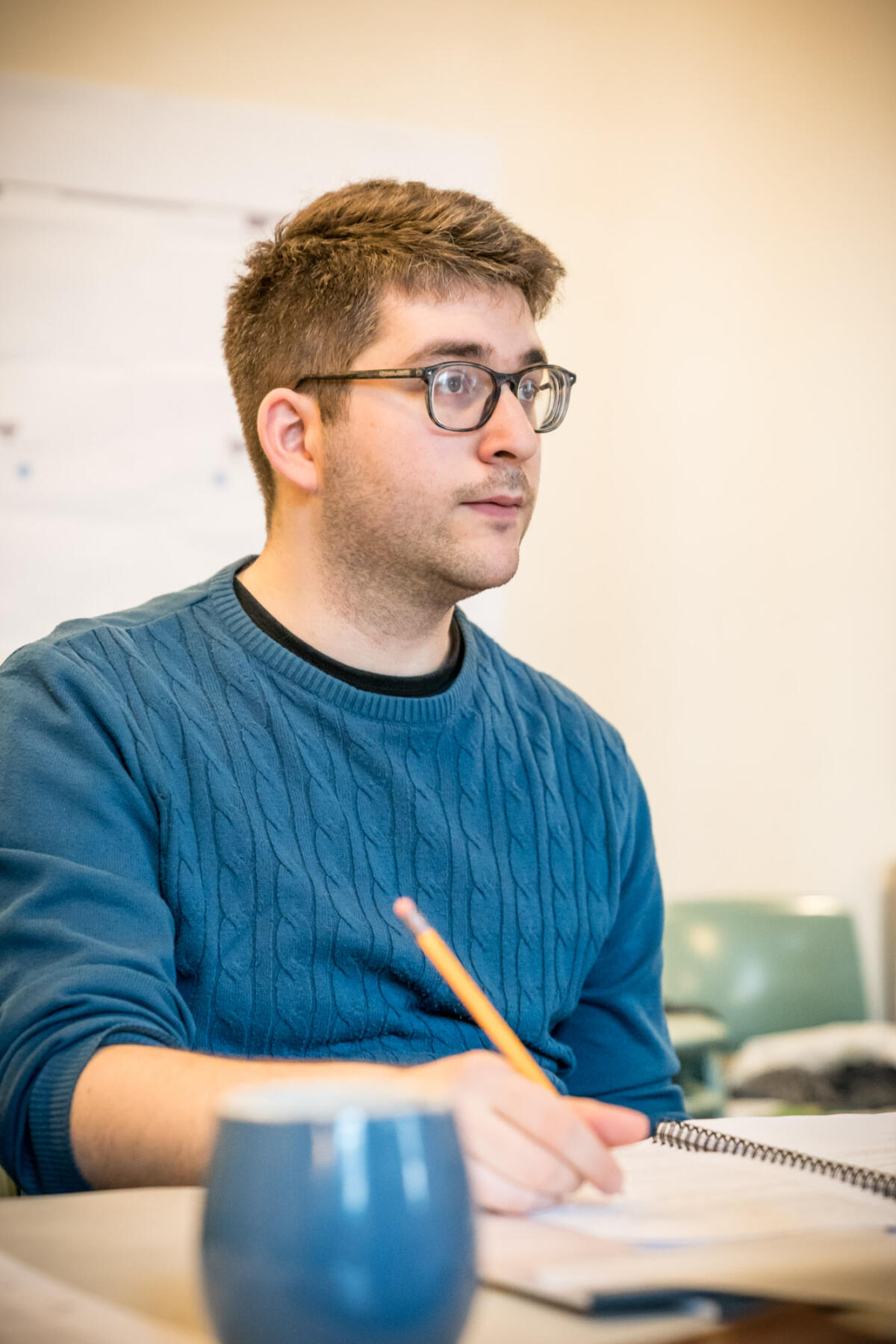
Briefly outlining his approach to rehearsals, Michael begins by saying, ‘I’d like to encourage all of us in this room to think there’s absolutely no such thing as a stupid question’. He explains that Josh Seymour, the Associate Director, will start to compile facts. For example: What’s a ‘charnel house’? What are ‘persimmons’? Josh will gather images of Henri Matisse, Jackson Pollock and anyone else, or thing, mentioned in the play that the team think it would be useful to have. (Fred asks for a photo of an Oldsmobile Convertible, which Rothko refers to in relation to Pollock.) Michael says they’ll also need to get a copy of Rembrandt’s painting Belshazzar’s Feast, which Rothko discusses in Scene Three. Fred recalls that he sought additional help with the pronunciation of the Hebrew in Rothko’s lines, ‘Mene, Mene, Tekel, Umpharsin’, meaning, ‘You have been weighed in the balance and have been found wanting’.
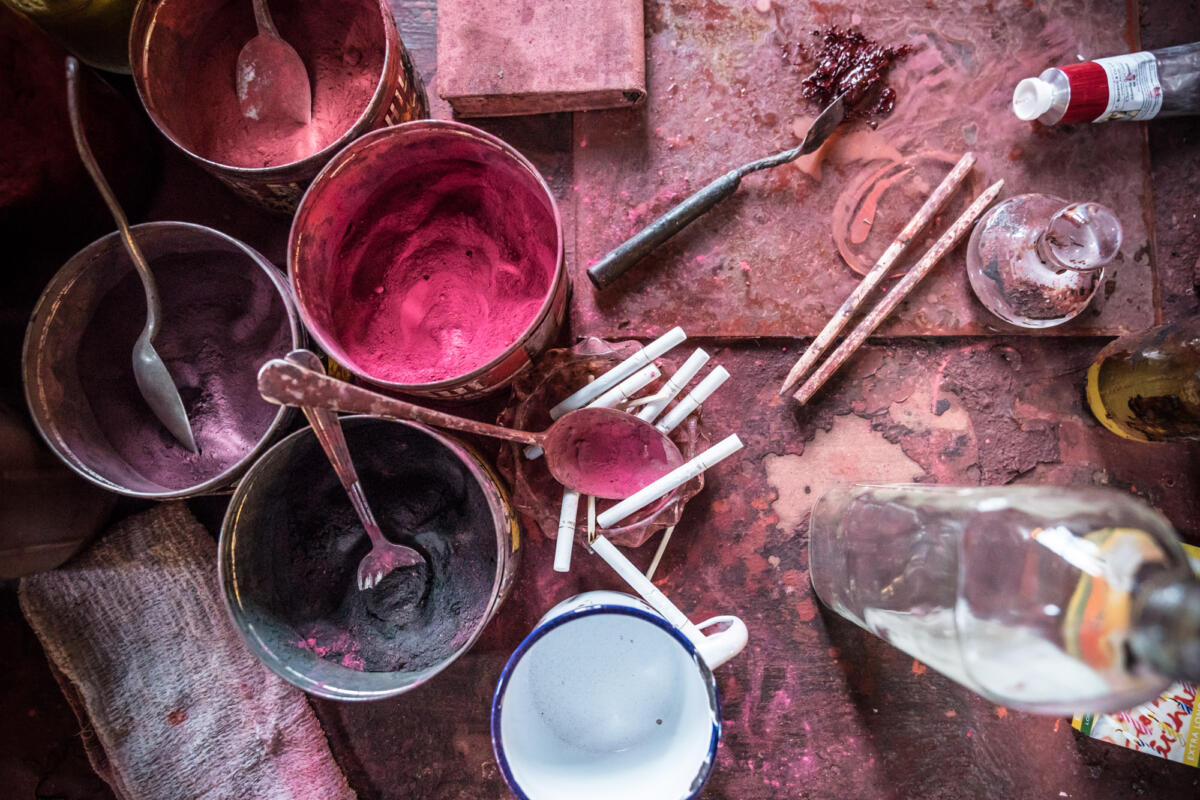
Michael asks Greg whether the cast can smoke real cigarettes on stage as the rules and regulations governing this can vary. Stage Management say they’ll seek clarification while Fred recalls smoking low-tar cigarettes for the original production. Fred also asks for Rothko’s glasses to contain his own prescription lenses for ease. There’s a brief discussion about wigs, but as with the original production these will be dispensed with as they were found to get covered in paint. Instead, Fred will have a shaved head as before. Michael refers to photographs and recordings of Rothko that may be of use.
‘Here’s the way I like to try and work,’ says Michael. ‘I like to do a light sketching of the whole piece by the end of week one, but nothing needs to be set in stone. It means that by the time you get to the weekend, looking through the script you can recall where you were. Another reason to get it on its feet as soon as possible is to try things physically.’ He adds that he doesn’t need the actors off book in this first week and won’t introduce music – Composer Adam Cork’s score – until later, commenting that it will become like a ‘third character’.
Michael questions the date at the start of the play: ‘First of all, what year was the Seagram’s commission? We can come up with a timeline of what was going on globally.’ This would begin in 1958 and end in 1960, the time-span of the play. Michael suggests they play around with the timeline, as Shakespeare does in many of his history plays.
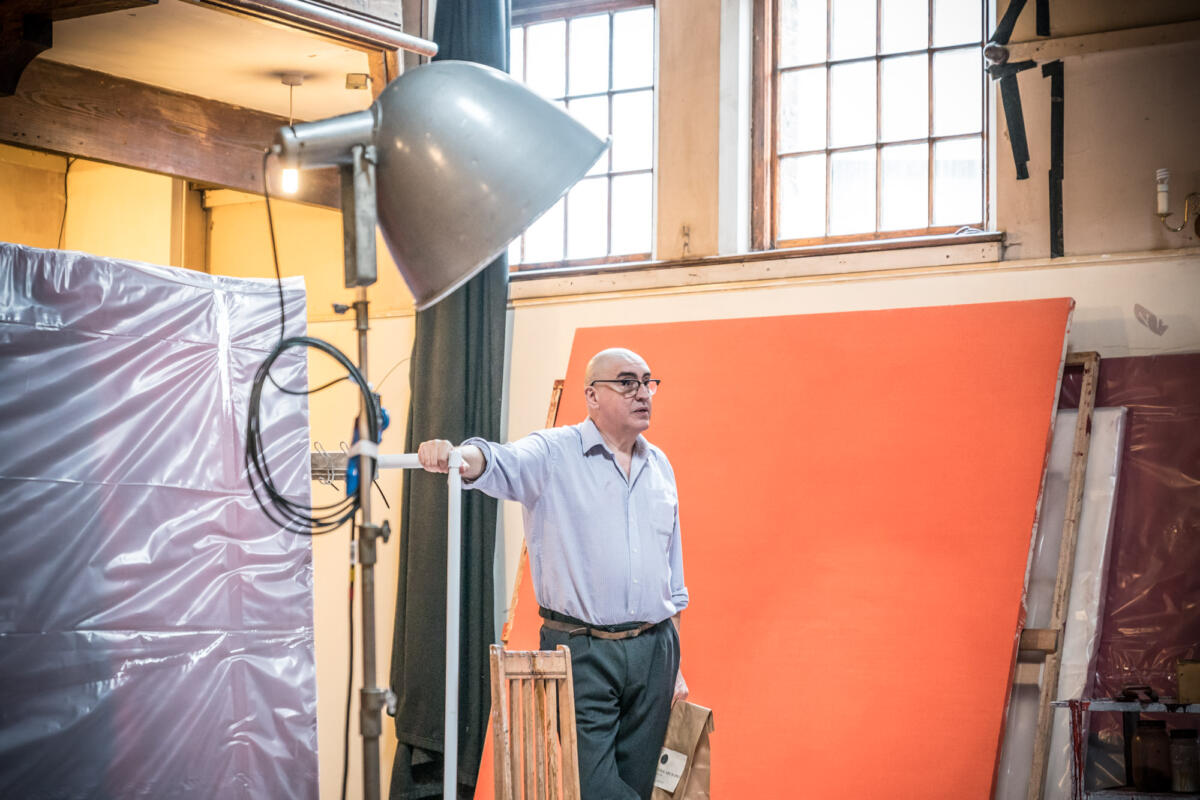
This initial discussion over, they start work ‘up on their feet’ on the first scene of the play. ‘Michael, do you want to do the same pre-set as before?’ asks Fred, which involves Rothko sitting in a chair, smoking a cigarette, contemplating one of his paintings. ‘Go up to the canvas and engage with it,’ suggests Michael. ‘Here’s what we need to achieve – you have to show ownership over it.’ They run the first scene, all the way through Ken’s first entrance and his introduction to Rothko, the artist’s studio and, in particular, his work.
‘Great,’ says Michael afterwards. ‘So why don’t we define that.’ By which he means go back over the scene and clarify its various moments and turning-points. They discuss how Rothko wanted his paintings to be viewed. ‘He apparently recommended standing eighteen inches from the canvas,’ says Fred. Looking at the moment when Rothko instructs Ken where to stand in relation to the paintings, Michael encourages Fred to ‘put the pressure on him more’ to lean into the canvas.
‘I’m doing all the old moves, is that OK?’ Fred asks Michael. Michael suggests trying things differently. For example, rather than looking at the painting upstage with his back to the audience, Michael asks Fred to look out at the audience, the fourth wall acting as the canvas. ‘It’s an interesting exercise this,’ comments Michael. ‘It’s a less subversive piece of staging as it helps us to see the actors’ faces.’ However, it’s problematic when Rothko shines a light on the painting as it’s directly in the face of the audience. ‘Both versions have merits,’ observes Michael, ‘but I think I prefer the original’ – Rothko looking at the canvas upstage.
